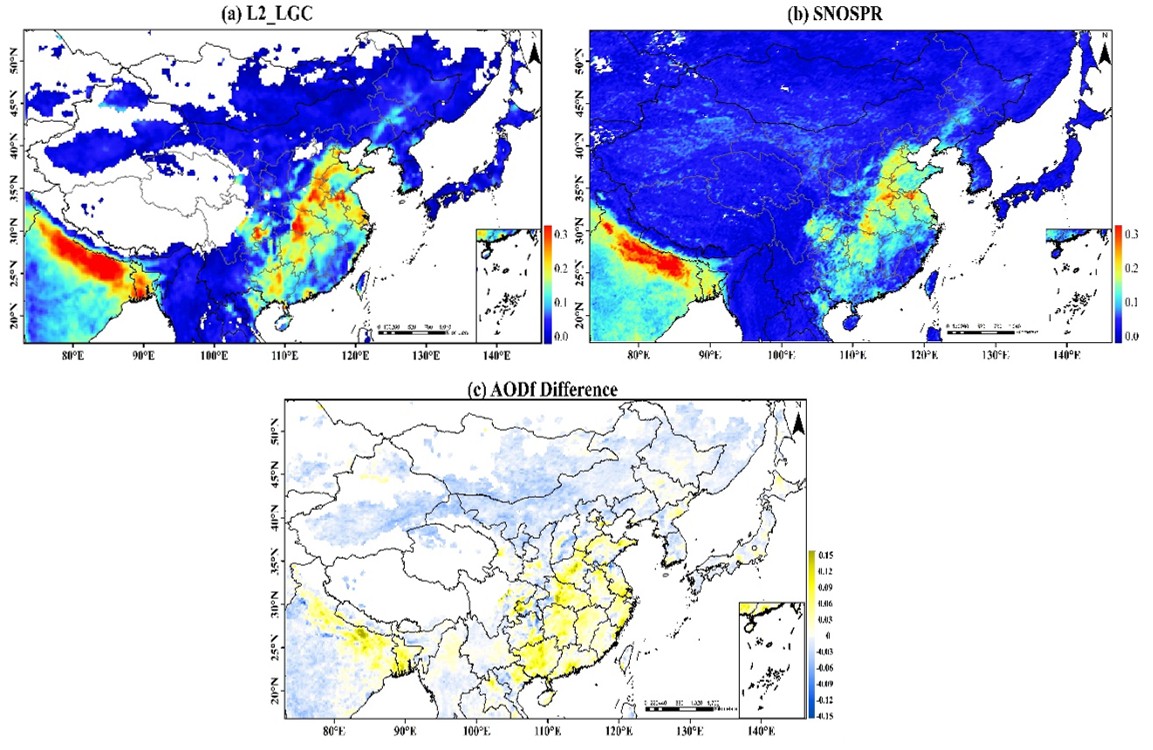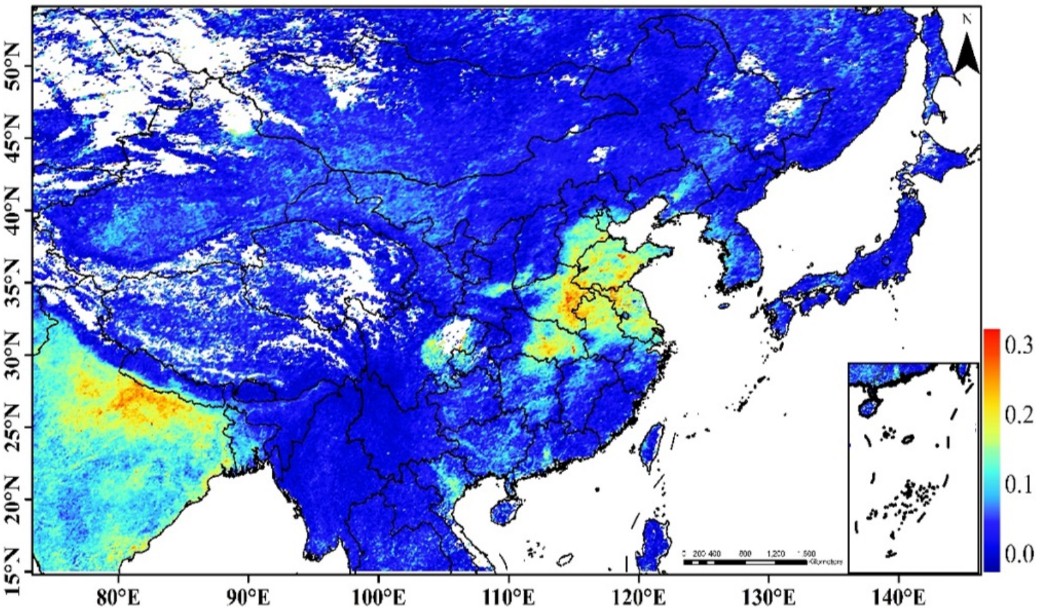Scientists Propose New Algorithm for Fine-mode Aerosol Retrieval based on Polarized Satellite Data
Fine-mode aerosols (FMA) generally generated from anthropogenic sources, play an essential role in global radiation balance, atmospheric environment, climate change, and human health. However, the FMA retrieval remains a challenge. Recently, Prof. LI Zhengqiang and his team from the State Environmental Protection Key Laboratory of Satellite Remote Sensing, Aerospace Information Research Institute (AIR) have proposed a new aerosol retrieval algorithm for better FMA retrieval, called Spectral Neutrality of Surface Polarized Reflectance, or SNOSPR for short. The research paper was published in Remote Sensing of Environment, a top academic journal in the remote sensing field.
It is well-known that multi-angle polarized observation has great advantages in FMA retrieval, and the accurate estimation of surface polarization reflectance (SPR) is crucial during the retrieval process. Traditionally, SPR is estimated by a surface Bidirectional Polarization Distribution Function (BPDF) model. Although many BPDF models have been developed, there is still no single model that can be applied to all kinds of surface types with high precision, and there are still some shortcomings of large estimation error on certain types of surface.
Compared to traditional methods, SNOSPR can retrieve FMA AODf with high precision based on the characteristics that SPR hardly changes at wavelengths from the visual to near-infrared. The new method does not depend on the BPDF, and can get Angstrom exponent (AE) and SPR simultaneously.
The research also discussed the uncertainties of the new method from various aspects, such as the uncertainty caused by the hypothesis that SPR does not change with wavelength, the use of multi angle data, et al. SNOSPR was applied for POLDER-3 data and all the retrievals were tested against AERONET observations. The validation results showed that SNOSPR can fit for different surface types, and has better retrieval qualities and higher spatial resolution than POLDER official products.
The method was applied on Directional Polarimetric Camera (DPC) data onboard the GF-5 satellite and good validation results were obtained against AERONET observations.
The results in this study demonstrated the effectiveness of the SNOSPR algorithm and its potential for more reliable AODf/SPR retrievals for monitoring local atmospheric pollution and related studies.
This research is financially supported by the National Outstanding Youth Foundation of China (Grant No. 41925019), and the National Natural Science Foundation of China (Grant No. 41671367, 41871269).

Fig. 1. Spatial distribution of average AODf products at 865 nm in November 2011 for (a) L2_LGC at 18 km spatial resolution, (b) SNOSPR at 6 km spatial resolution, and (c) AODf difference between L2_LGC and SNOSPR.

Fig. 2. The 865 nm AODf distribution on November 18, 2011, (a) is a true-colour image, (b) is the results of SNOSPR, (c) is the results of POLDER-3 L2_LGC.

Fig. 3. Average AODf from DPC data from November 24 to 30, 2018.



News & Events